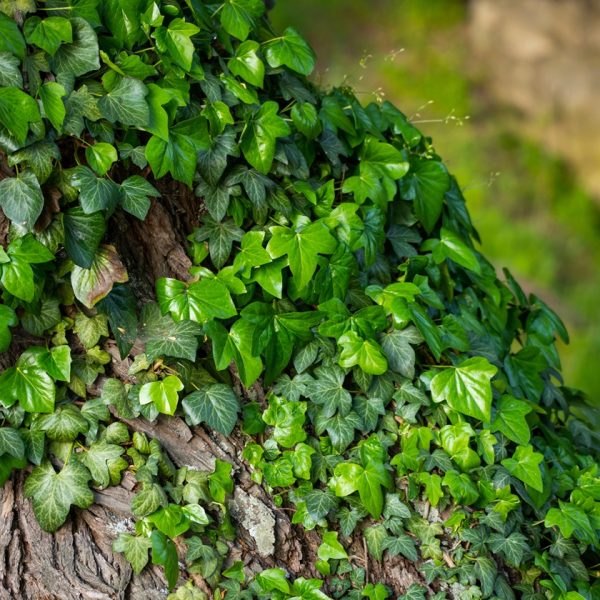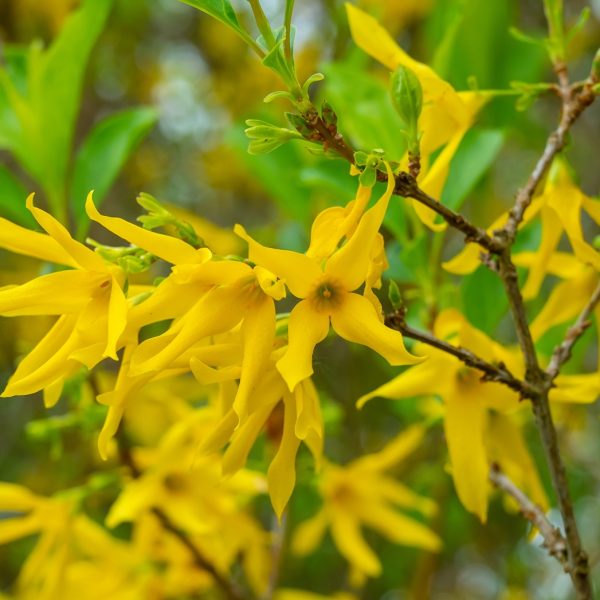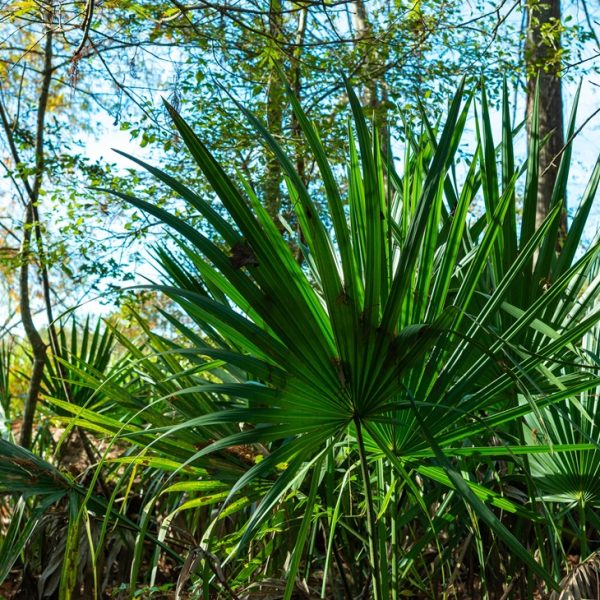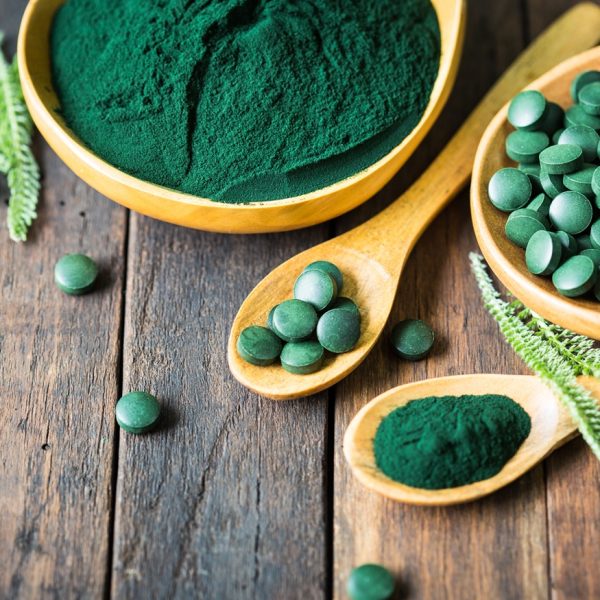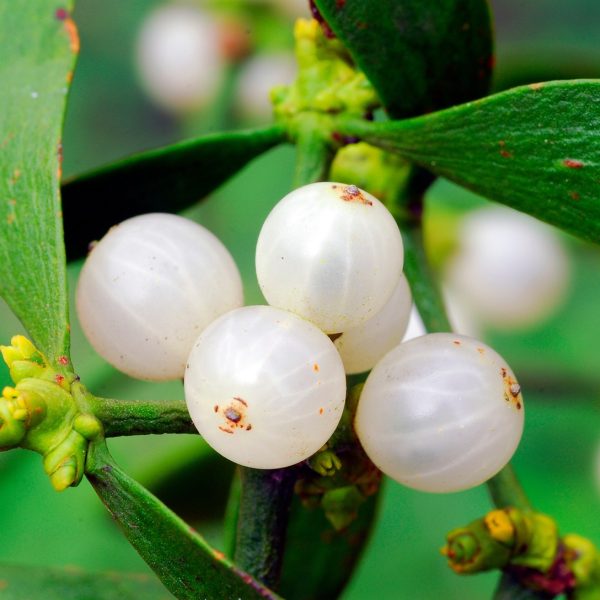-
How does it feel?
Coca is mildly astringent and toning with a mild taste and noticeable numbing properties when taken in some forms.
Coca is mildly stimulating, energising and opening and can help lift one’s mood and sociability. Masticating the leaves in the traditional manner can also result in a mouth-numbing sensation.
-
What can I use it for?
Coca is currently legally prohibited and is not available outside its native area. Visitors to the area can drink the tea to alleviate altitude sickness (soroche), headaches and digestive upsets.
Locals chew the dried, broken or powdered leaf as a mild social stimulant. A quid of leaves is placed in the cheek and held there, to allow its stimulating properties to be absorbed across the mucous membranes.
-
Into the heart of coca
Kuka, hayu, and ipadu are just some of the Indigenous names of this shrub. Its origin stories vary depending on area and community, but many talk of it being a gift of the gods, or a reward for a sacrifice. It suppresses hunger and thirst, while being mildly stimulating, on a par with coffee or tobacco, which makes it valuable for working in extreme environments (such as high altitudes and low temperatures etc.).
The ‘opening’ nature of the herb increases communication and for this, it is used for gift exchange and as a ritual and symbolic plant in community events, including social rituals like births, marriages and deaths (1,2).
-
Traditional uses

Coca (Erythroxylum spp.) Coca is one of the oldest cultivated medicinal plants and was domesticated at least 8000 years ago (3). Coca is used as a social and ritual plant in many South American societies and Indigenous groups, particularly across the Andes, Amazon and Sierra Nevada. Masticating a quid of the leaf reduces hunger and thirst and provides a mildly stimulating effect, which is valued in both day-to-day social interactions and important community ceremonies, such as births, marriages, deaths, planting, harvesting and divination. These practices reflect the plant’s functional properties and its deep, symbolic spiritual meaning (2,4,5,6).
Medicinally, coca is used as a general curative for a wide range of conditions, from headaches to rheumatism but is particularly valued for its astringent and toning digestive properties. It is also a key preparation for curing altitude sickness (soroche). The alkaloid content also provides a topical analgesic effect when masticated, so it is used for oral pain such as toothache, and as a poultice for wounds, aches and pains. It has also been used as an aphrodisiac and for treating impotence (2,5,7). Importantly, the leaf is not considered addictive due to its very low concentration of alkaloids (<1%) (8).
Coca came to the attention of Europeans from the time of Spanish colonisation of South America in the late 16th century. However, possibly due to transport issues and chemical instability of the leaves on sea journeys, coca leaf use did not transfer to Europe until the isolation of its active constituent alkaloid, cocaine, in 1860 (4,5,8,9). After this, cocaine came to the attention of Austrian medical student, Sigmund Freud who explored its stimulant properties, which subsequently influenced his later development of psychoanalysis. Another Austrian medic, Karl Koller, noticed the numbing effect of cocaine and applied it to ophthalmology, and developed the first anaesthetic surgery in 1884, a significant moment in medical history across the world (8,9,10).
During this period, both coca leaf (and cocaine) became popular in over-the-counter stimulant tonic drinks, and other medications for hay fever and oral pain. A famous example is Coca Cola, which still uses decocainised Peruvian coca leaf in its recipe today. Unfortunately, the isolated chemical is highly addictive and the widespread availability of the drug and subsequent negative social effects led to the eventual regulation of coca leaf (and cocaine) across America and Europe in the early 19th Century (9). As it is the source of cocaine, coca leaf is currently illegal across many parts of the world. The current main market for coca leaf, outside traditional Indigenous use, is to supply the illegal cocaine drug trade. This has led to negative social, cultural and environmental impacts in its native growing range, including stigmatising the traditional use of coca leaf by Indigenous groups. See the Sustainability section.
-
Traditional actions
Herbal actions describe therapeutic changes that occur in the body in response to taking a herb. These actions are used to express how a herb physiologically influences cells, tissues, organs or systems. Clinical observations are traditionally what have defined these actions: an increase in urine output, diuretic; improved wound healing, vulnerary; or a reduction in fever, antipyretic. These descriptors too have become a means to group herbs by their effects on the body — herbs with a nervine action have become the nervines, herbs with a bitter action are the bitters. Recognising herbs as members of these groups provides a preliminary familiarity with their mechanisms from which to then develop an understanding of their affinities and nuance and discern their clinical significance.
-
Traditional energetic actions
Herbal energetics are the descriptions Herbalists have given to plants, mushrooms, lichens, foods, and some minerals based on the direct experience of how they taste, feel, and work in the body. All traditional health systems use these principles to explain how the environment we live in and absorb, impacts our health. Find out more about traditional energetic actions in our article “An introduction to herbal energetics“.
Western energetics
-
What practitioners say

Coca (Erythroxylum spp.) Coca is not in current use by Western practitioners due to its illegality. This also means there is limited research into its mechanism of action; however, in its native range, it is used as a general tonic and for a wide range of disorders:
Digestive system
It is considered a toning and healing herb for digestive disorders, including ulcers, diarrhoea, gastritis, pain and spasm. It has been theorised that coca’s tropane alkaloids may use metabolic pathways similar to those of hyoscine (henbane, Hyoscyamus niger), which has demonstrated clinical efficacy in treating digestive symptoms. It is also used in poultice form for oral and dental pain (2,7).
Nervous system
Coca’s alkaloids are nervous system stimulants. Coca has been used traditionally for sadness and depression. It has been suggested as a potential therapeutic for ADHD (7).
Musculoskeletal system
Ethnobotanical literature shows that leaf poultices are used for rheumatic pains (2,7). One would assume this is due to coca’s topical analgesic effect, due to its alkaloid content; however, there may be other prevalent mechanisms of action that have not yet been elucidated.
Cardiovascular system
Coca leaf has been used for centuries for increasing stamina and endurance and it has been suggested that this could be used for improving physical performance outcomes. The reason is not clear but in relation to its use at high altitudes, it may be due to increased vasoconstriction and haemoglobin levels, while also acting as a blood thinner (7). A study showed that chewing 12–50 g of coca leaves raises resting heart rate by up to 27%, and increases mean arterial blood pressure by 10–25% (19).
Reproductive system
Traditionally used as an aphrodisiac, there has been anecdotal evidence for coca’s use in impotency. Though this has yet to be thoroughly researched, theoretically, mechanisms would involve coca’s stimulating and cardiovascular effects (7). It is also possible that its mood-enhancing effects improve sexual desire, as depression and anxiety often lower libido.
-
Research

Coca (Erythroxylum spp.) Due to the prohibition of this plant, there is limited research around its medical use. However, there have been some fascinating studies which will be discussed in this section.
Effect of chewing Erythroxylum coca Lamarck (Coca) on cholesterol and serum triglyceride levels in high-altitude people
An observational comparative study was conducted in Ayacucho, Peru, where it is a cultural norm to chew coca leaves regularly. The research was conducted to investigate whether coca has an effect on cholesterol and serum triglyceride levels, and the therapeutic implications for obesity (11).
Fifty people who regularly chewed coca were compared to fifty people who were demographically similar but didn’t chew coca. Over seven months, data was collected on markers such as serum cholesterol and triglyceride levels, and interviews were conducted to understand people’s socioeconomic status, dietary habits and coca chewing practices.
Results showed that cholesterol and triglyceride levels were significantly lower in the group who chewed coca as shown below:
- Cholesterol and triglyceride reduction: Chewing coca leaves correlated with lower serum cholesterol and triglycerides, potentially linked to altered lipid metabolism or appetite suppression.
- Enzyme activity inhibition: Coca extract did not enhance digestion of fatty foods; instead, it may inhibit enzymatic pathways involved in lipid processing.
- Nutritional implications: Lower cholesterol/triglyceride levels in chewers align with prior findings of poorer nutritional markers (e.g. reduced serum albumin) in coca users, suggesting a trade-off between metabolic effects and malnutrition risks.
This shows that coca could potentially be helpful for the global metabolic health crisis. Coca could also be beneficial for obesity as it suppresses appetite naturally with minimal side effects (3).
Evaluation of the effect of coca leaf powder consumption on bone turnover in postmenopausal women
A clinical study was conducted to investigate the effects of coca on bone turnover in postmenopausal women, as bone density rapidly decreases after menopause, putting people at risk of osteoporosis. A total of 21 participants volunteered for the research, all of them postmenopausal. They ingested 4 g of coca leaf powder mixed with water for 90 days while maintaining their regular diet and lifestyle (12).
Different biomarkers were measured that indicate bone turnover (which is the continuous process of bone breakdown and reformation). These include procollagen 1 N-terminal propeptide (P1NP), N-telopeptide of type 1 collagen (NTX1), beta-crosslaps (βCTX), and bone alkaline phosphatase (BALP). Blood samples were taken on days 1, 45 and 90 of the experiment. Antioxidant capacity was also measured (12).
Results showed that markers of NTX1 were reduced, indicating reduced osteoclast activity. Osteoclasts are cells which break down bones, and so reducing their activity would suggest less bone degradation. Levels of P1NP increased, and P1NP indicates levels of bone formation, suggesting that coca could help with healthy bones (12).
There are many mechanisms of action through which coca could be helpful for bone health. Coca is extremely rich in minerals, particularly calcium, and it has high antioxidant activity due to high levels of cofactors for antioxidant enzymes. Coca is also a source of insoluble dietary fibre, containing 38.02 g per 100 g. Research shows that colonic fermentation of non-digestible carbohydrates improves the absorption of minerals such as iron, magnesium, and calcium, which could contribute to increased bone density. Polyphenols in coca may reduce oxidative stress and inflammation, supporting osteoblast function (osteoblasts facilitate bone formation) (12).
Further studies are needed, but overall the preliminary data produced by this study supports the therapeutic use of coca for bone health in postmenopausal women (12). Whilst this study is valuable, the sample size is small and it was not blinded nor randomised, and had variable biomarker responses. Therefore, the evidence is not robust, but it does warrant further investigation.
Ethanol extract of Schinus molle L. (Molle) and Erythroxylum coca Lam (Coca): Antibacterial properties at different concentrations against Streptococcus mutans
Bacterial resistance to antibiotics is a major issue worldwide, and the pace of drug development is insufficient to tackle this crisis. An in vitro study was conducted on two species from Peru: Peruvian pepper (Schinus molle), also known as pink peppercorns, and coca (Erythroxylum coca) (13).
A total of 75 petri dishes were inoculated with Streptococcus mutans, and different extracts of the plants were added to the petri dishes to test their inhibitory effects on the bacteria. Ethanol extracts were made at 50% and 75%. Significant antibacterial activity was found with both extracts, with a stronger effect found in the 75% extract, with the greatest antibacterial effect at 48 hours over 24 hours. The antibacterial effects are attributed to the secondary metabolites, including alkaloids and flavonoids (13).
This study provides evidence for the antibacterial potential of E. coca and S. molle, and warrants further research (13).
-
Did you know?
In 1875, Scotland, Sir Robert Christison, president of the British Medical Association, tested the leaves as he took himself and 10 students to walk 30 miles over the countryside hills, including climbing 3200 feet up a mountain. He reported, “On arrival home before dinner, I felt neither hunger nor thirst, after complete abstinence from food and drink of every kind for nine hours, but upon dinner appearing in half an hour ample justice was done to it.” At the time of the experiment, Robert was 78 (14).
In February 2025, the McKenna Academy of Natural Philosophy hosted a historic coca summit to bring together the leading voices on the topic of legalising coca. From indigenous people, researchers, ethnobotanists, scientists and policy makers, they all gathered to exchange knowledge and discuss how to propel this work forward ethically and respectfully. It was one of the first conferences of its kind discussing the coca issue.
Additional information
-
Botanical description
Coca is a tropical shrub growing to 2–3 m in height. The key medicinal species of the Andes and Amazon are the cultivated varieties of Erythroxylum coca Lam. (var. coca and var. ipadu) and E. novogranatense (Morris) Heiron (var. novogranatense and var. truxillense). The leaves are, at most, a couple of centimetres in length, oval, with a darker green surface and lighter green underside (2).
A key feature is two longitudinal curved lines running parallel to the midvein in all species except E. truxillense. It is thought these are creases that occur during bud formation. Some cultivated species are infertile due to being propagated by stem cuttings (7,2). The flowers are small with five yellow-cream petals, with heart-shaped anthers and three pistils (2).
-
Common names
- Coca
- Kuka
- Khuka
- Ypadú
- Ipadu
- Hayu
-
Safety
There are no studies showing safety in pregnancy and breastfeeding as little research has been conducted. However, in cultures where people consume coca traditionally, women have coca when breastfeeding, and some even have it during labour for strength (20).
If taking the traditional preparation with ash, then over time it can irritate gums and buccal mucosa as alkali substances can be corrosive. However, research shows that people who regularly chew coca have better dental health than those who don’t. A study showed that coca chewers scored better for clinical attachment loss than those who didn’t chew coca, showing less destruction of the tissues that support the teeth (21). More research is needed to elucidate the results as chewers also showed higher numbers of inflammatory cells.
-
Interactions
Coca has not been well researched, and therefore pharmaceutical interactions have not been researched. However, we know that certain medicines are best to avoid due to cocas mechanisms of action.
Antihypertensives such as captopril and amlodipine would be best to avoid as there is a risk of coca raising blood pressure. Also, medicines to treat hypotension (low blood pressure) such as nifedipine must be avoided with coca, as coca also can raise blood pressure (19). Too much of the same effect can also potentially cause problems.
Coca may be contraindicated with medication for diabetes and for hypoglycaemia as it can affect blood glucose levels (22).
Generally with herbal medicines and pharmaceuticals, it is best to avoid taking them together with others that have the same action, or opposite actions as they can antagonise each other.
-
Contraindications
Coca can increase heart rate, and so should be avoided in cases of elevated blood pressure or myocardial strain (15).
-
Preparations
The coca leaves are dried or lightly roasted and then prepared as follows:
- Tea
- Mambé (powdered coca with ash)
- Leaves are chewed with a powder-like alkali substance made from ash
-
Dosage
It is difficult to confirm a dosage for coca, as in the cultures that traditionally use coca it is common for people to carry a bag around of the leaves and chew them all day. Usually, one starts with a small handful of the leaves and chews more as and when they would like more.
- Tincture (ratio | %): N/A (tincture and fluid extracts are not traditionally used to prepare coca)
- Fluid extract (1:1 | %): N/A
- Infusion/decoction: 1 teaspoon of dried leaf steeped in 200 ml boiling water
- Other preparations: “Coquear” or “mascar” 1–2 tablespoons of chopped or powdered leaves is placed in the mouth with an alkaline powder admixture and left to release its constituents across the oral mucous membranes over a period of 30–90 minutes.
-
Plant parts used
Leaves — either dried or slightly roasted
-
Constituents
- Alkaloids: Cocaine, benzoylecgonine, methylecgonine,tropacocaine, hygrine and Cuscohygrine, truxilline (α- and β-truxilline), ecgonine (16)
- Vitamins and minerals include (16) β-Carotene (provitamin A), vitamin E (α-tocopherol), B vitamins — thiamine (B1), riboflavin (B2), niacin (B3); vitamin C, vitamin D (16)
- Minerals: Calcium, iron, magnesium, zinc, potassium and phosphorus (16)
- Coca also contains many flavonoids, polyphenols and tannins that contribute to its medicinal properties.

-
Habitat
Peru, Bolivia, Colombia, Amazon Basin (3,2)
- Erythroxylum coca var. coca is found in wet montane forests of the eastern Andean slopes of Peru and Bolivia.
- Erythroxylum coca var. ipadu is grown in the lowland Amazon basin.
- E. novogranatense var. novogranatense is cultivated in the dry valleys of the Cordilleras and the Sierra Nevada de Santa Marta.
- E. novogranatense var. truxillense is grown in the arid regions of northwestern Peru.
-
Sustainability
 Coca is a particularly hardy plant that grows across much of South America, however the cocaine issue creates many problems with the ecosystem. The illicit drug trade of cocaine means that a lot of land is deforested to grow the plant and to traffic it out of the jungle, with illegal roads being built over “protected areas” undermining any conservation efforts. As part of the war on drugs for over 25 years, the US government sprayed millions of litres of glyphosate from planes over millions of acres of South American land in an attempt to target plantations. This desecrates the land and damages its inhabitants and ecosystems (17,18). Whilst these catastrophes are not simply because of the coca leaf, there are many troubles surrounding the plant and its derivatives. One may argue that the destruction of the land and people’s communities are in fact because of prohibition.
Coca is a particularly hardy plant that grows across much of South America, however the cocaine issue creates many problems with the ecosystem. The illicit drug trade of cocaine means that a lot of land is deforested to grow the plant and to traffic it out of the jungle, with illegal roads being built over “protected areas” undermining any conservation efforts. As part of the war on drugs for over 25 years, the US government sprayed millions of litres of glyphosate from planes over millions of acres of South American land in an attempt to target plantations. This desecrates the land and damages its inhabitants and ecosystems (17,18). Whilst these catastrophes are not simply because of the coca leaf, there are many troubles surrounding the plant and its derivatives. One may argue that the destruction of the land and people’s communities are in fact because of prohibition. Habitat loss and over-harvesting from the wild are two of the biggest threats faced by medicinal plant species. There are an increasing number of well-known herbal medicines at risk of extinction. We must, therefore, ensure that we source our medicines with sustainability in mind.
The herb supplement industry is growing at a rapid rate and until recent years a vast majority of medicinal plant produce in global trade was of unknown origin. There are some very real and urgent issues surrounding sustainability in the herb industry. These include environmental factors that affect the medicinal viability of herbs, the safety of the habitats that they are taken from, as well as the welfare of workers in the trade.
The botanical supply chain efforts for improved visibility (transparency and traceability) into verifiably sustainable production sites around the world is now certificated through the emergence of credible international voluntary sustainability standards (VSS).
Read our article on Herbal quality & safety: What to know before you buy and Sustainable sourcing of herbs to learn more about what to look for and questions to ask suppliers about sustainability.
-
Quality control
As coca is only legal in the places it traditionally grows and is consumed, supply chains are short and the knowledge about the plant and what qualifies it as good quality is high amongst consumers who grew up with the plant. However, a rapid rise in popularity means that quality levels have already started to decline in local territories. If coca becomesl globally legalised, it is likely to grow in popularity very quickly and this is when issues with quality would become prevalent. Particularly as many preparations are powdered, the product becomes more vulnerable to adulteration with other, cheaper substances. Therefore, measures and standards in quality control are necessary to prevent these issues as well as ensure ethical supply.
-
How to grow
Alkaloid production is related to its native high altitudes and climate. Some medicinal species may only be grown by stem cutting (2). In Indigenous areas it is planted in a polyculture with other food crops. The plant takes 1–2 years to establish, and be at its peak after five years. Leaf harvests are 2–3 times per year (2).
-
Recipe

Coca (Erythroxylum spp.) Mambé
Coca can be steeped as a tea, or made into a traditional preparation commonly referred to as mambé or ypadú. This is a powdered preparation of dried coca, mixed with ash, which is alkaline. This helps to extract the active compounds from coca.
The mixture is then held in the side of the cheek for slow absorption into the bloodstream.
The preparation of this medicine is intricate and varies across communities. Various burnt substances are used depending on the region.
Ingredients
- Coca leaves
- Burnt substances used as an alkali solvent. This can include burnt yarumo leaves, quinoa stalks and leaves, stevia leaves or seashells.
- Sometimes bicarbonate of soda is used if there is no suitable ash around, as bicarbonate of soda still has a high PH.
Method
- For Coca novogranatense varieties, the leaves are lightly toasted in a ceramic pan over a slow wood fire
- Constantly turn leaves to prevent burning
- Bright green leaves should turn yellow and brown
- Toasting improves the flavour by removing methyl salicylate compounds
- They are then left to reabsorb ambient humidity so they are softer and pliable (a process known as “sweating”)
- Leaves can be chewed in quids with an alkali substance (usually ashes of the substances mentioned above)
- Sometimes the leaves of other species are powdered and mixed with ash to make mambé or similar preparations (2)
-
References
- Allen C. The hold life has: Coca and cultural identity in an Andean community. Latin American Anthropology Review. 1990;2(1):20-21. https://doi.org/10.1525/jlca.1990.2.1.20.2
- Plowman T. The Ethnobotany of Coca (Erythroxylum spp., Erythroxylaceae). Vol 1. New York Botanical Garden Press; 1984. https://www.jstor.org/stable/43931370
- Przelomska N a S, Diaz RA, Ávila FA, et al. Morphometrics and Phylogenomics of Coca (Erythroxylum spp.) Illuminate Its Reticulate Evolution, With Implications for Taxonomy. Molecular Biology and Evolution. 2024;41(7). https://doi.org10.1093/molbev/msae114
- Bauer I. Travel medicine, coca and cocaine: demystifying and rehabilitating Erythroxylum – a comprehensive review. Tropical Diseases Travel Medicine and Vaccines. 2019;5(1). https://doi.org/10.1186/s40794-019-0095-7
- Grisaffi T. A Brief History of Coca: From Traditional Use to the Cocaine Economy.; 2021. https://research.reading.ac.uk/coca-cocaine-bolivia-peru/wp-content/uploads/sites/127/2021/07/A-history-of-coca-Grisaffi-Website-V2.pdf
- Stolberg VB. The Use of Coca: prehistory, history, and ethnography. Journal of Ethnicity in Substance Abuse. 2011;10(2):126-146. https://doi.org/10.1080/15332640.2011.573310
- Restrepo DA, Saenz E, Jara-Muñoz OA, et al. Erythroxylum en el foco: revisión interdisciplinaria de un género ignorado (Erythroxylum in Focus: An Interdisciplinary Review of an Overlooked Genus). SSRN Electronic Journal. Published online January 1, 2020. https://doi.org/10.2139/ssrn.3596187
- Toyne M. Transformation of Coca to cocaine: An overview of traditional drug use and modern drug abuse. The University of Western Ontario Journal of Anthropology. 2023;25(1):94-115. https://doi.org/10.5206/uwoja.v25i1.16031
- Karch SB. Cocaine: history, use, abuse. Journal of the Royal Society of Medicine. 1999;92(8):393-397. https://doi.org/10.1177/014107689909200803
- Markel H. Über Coca: Sigmund Freud, Carl Koller, and Cocaine. JAMA. 2011;305(13):1360. https://doi.org/10.1001/jama.2011.394
- Javier ÑUJ. Effect of chewing of Erythroxylum coca Lamarck (Coca) on cholesterol and serum triglyceride levels in high andean people. DOAJ (DOAJ: Directory of Open Access Journals). Published online February 1, 2021.https://doi.org/10.36610/j.jsars.2021.12010064
- Trigo-Pérez K, Suárez-Cunza S. Evaluación del efecto del consumo de hoja de coca pulverizada en marcadores de recambio óseo en mujeres posmenopáusicas. Revista Peruana De Ginecología Y Obstetricia. 2018;63(4):519-527. https://doi.org/10.31403/rpgo.v63i2023
- Loyola D, Mendoza R, Chiong L, et al. Ethanol extract of Schinus molle L. (molle) and Erythroxylum coca Lam (coca): Antibacterial properties at different concentrations against Streptococcus mutans: An in vitro study. Journal of International Society of Preventive and Community Dentistry. 2020;10(5):579. https://doi.org/10.4103/jispcd.jispcd_237_20
- Davis W. Beneath the surface of things: New and Selected Essays.; 2024.
- Spielvogel H, Rodriguez A, Sempore B, et al. Body fluid homeostasis and cardiovascular adjustments during submaximal exercise: influence of chewing coca leaves. European Journal of Applied Physiology. 1997;75(5):400-406. https://doi.org/10.1007/s004210050179
- of an ancient Andean tradition. Emergency Medicine International, 2016, 1–5. https://doi.org/10.1155/2016/4048764
- Camacho, A., & Mejía, D. (2017). The health consequences of aerial spraying illicit crops: The case of Colombia. Journal of Health Economics, 54, 147–160. https://doi.org/10.1016/j.jhealeco.2017.04.005
- Rodriguez, C. (2020). The effects of aerial spraying of coca crops on child labor, school attendance, and educational lag in Colombia, 2008-2012. Journal on Education in Emergencies, 6(1), 84. https://doi.org/10.33682/arm2-m7tn
- Spielvogel H, Rodriguez A, Sempore B, et al. Body fluid homeostasis and cardiovascular adjustments during submaximal exercise: influence of chewing coca leaves. European Journal of Applied Physiology. 1997;75(5):400-406. https://doi.org/10.1007/s004210050179
- Lyon PJ. The hold life has: Coca and cultural identity in an Andean community. Latin American Anthropology Review. 1990;2(1):20-21. https://doi.org/10.1525/jlca.1990.2.1.20.2
- Clinical and histological manifestations of chronic coca leaf chewing in a Peruvian population: a cross-sectional study. PubMed. Published January 1, 2021. https://pubmed.ncbi.nlm.nih.gov/33512338/
- Guzmán G, Imaña P, Afcha EA, Valerio A, H Spielvogel, Sauvain M. Effects of coca chewing on the glucose tolerance test. PubMed. Published 1997. https://pubmed.ncbi.nlm.nih.gov/9640756/

